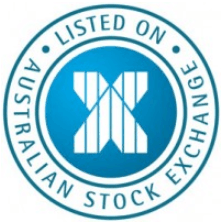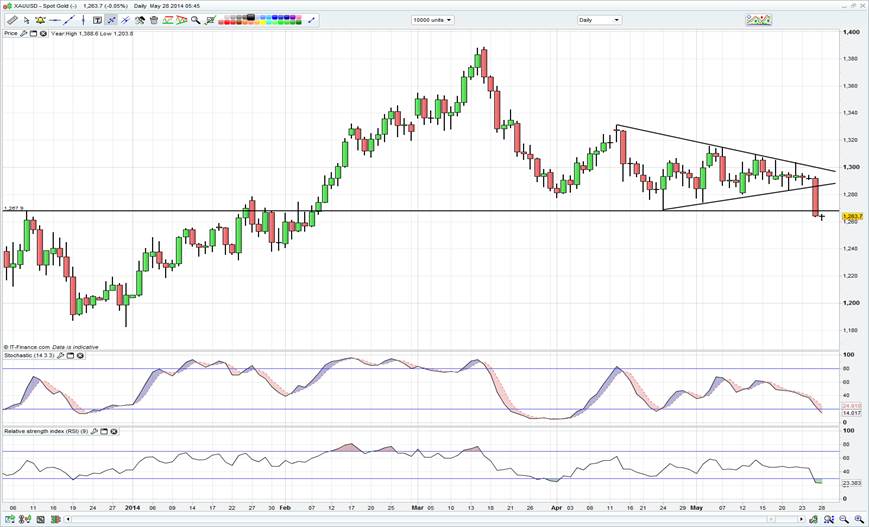
Chris Weston, Chief Market Strategist at IG Markets
Another new high in the MSCI world index, with the Eurostoxx 600 index and US equities the key contributors. However, the key talking point today has been around the breakdown in gold, further talk of support from the PBOC and again looking at structures around the upcoming ECB June 5 meeting.
In early Asian trade we heard from BoJ governor Kuroda around the importance of using communication as a policy tool in guiding market expectations. The BoJ has been doing this for some time and it has been vital in allowing the market (notably the speculators and leveraged community) to pile into assets which were expected to benefit significantly from the massive expansion of the monetary base and the premise for domestic institutions to move assets offshore in a hunt for increased risk and return.
This is no different from what the Fed or ECB have been doing and when you are embarking on radical (monetary) policy change, a central bank will always try and reduce the volatility which can arise from such change. Although as things stand right now the likes of the Fed and BoE (Bank of England) would like to see increased volatility through better two-way trade and thus reduced complacency.
We’ve also heard from Atlanta Fed president Dennis Lockhart in early Asia trade as well. Mr Lockhart is a voting member in 2015, so his comments are always interesting. His view is that the fed funds rate should be put up in 2H 2015, which is in-line with consensus, but he went on to say that a rise in inflation above 2% should not be ruled out. Like many in the market, he feels the US economy will not be weak over the long-term and judging by the consensus for the US 10-year to be at 3.6% by Q3 2015, fixed income strategists certainly echo this view.
The fact that the US 10-year bond finds buyers so easy to come by is testament to the bid that’s in global developed bond markets at present. However, I still feel at 2.51% the ten-year treasury offers a good long-term shorting opportunity and while you can understand the strong bid in German bunds (given expect ted policy easing from the ECB and recent weak GDP report), it seems the US 10-year has tagged along for the ride.
Many are questioning whether the Chinese are having an influence as well, however we may have to wait until we get the upcoming report level on China’s Q2 foreign currency reserves in mid-July to understand whether there has been a further spike in USD cash reserves, which in turn would translate into US treasury buying. This is because the PBOC are required to hold physical assets.
China’s property market again in focus
China property market is at the forefront on traders’ minds right now, although most strategists feel the prospect of a property crash is still very low. Local news today has speculated that we are likely to see a reserve ratio requirement (RRR) cut in certain regions and may also relax loan-to-deposit ratio limits. There are a number of statistics of late to show property is cooling in China, however since late February there has been a noticeable pick in accommodative language from the PBOC. It seems the government are happy to lean fairly heavily on the central bank to manage the transition that is occurring in the world second largest economy. It’s worth bearing in mind that domestically the cooling is not so much driven by tight central bank policy as it has been historically. On the contrary; policy has been prudent, but not tight for over a year. It seems more structural and playing back into traditional supply/demand imbalances. Property isn’t the default investment class of choice anymore, with wealth management products taking that spot, while many simply feel there are better opportunities elsewhere. The cooling property sector is a concern, but it’s worth bearing in mind that domestic balance sheets are in good shape and the PBOC can ease policy fairly rapidly, while continuing to encourage domestic banks to extend credit.
Perhaps the more accommodative stance of the PBOC is helping the region, but certainly the trend in the ASX is up and the year’s high of 5554 is firmly in markets’ sights. The Nikkei continues to find buyers and traders are keen to point out the divergence seen between the index and USD/JPY, which is more firmly correlated with US bond yields.
Gold finally break down
Gold stocks have naturally been savaged today, with spot gold breaking down. From a pure price action perspective, gold has been trading sideways since early April, with the intra-day ranges becoming lower and lower. It felt like something had to give and a simple look at the key moving averages (21-55-100 and 200-day) showed a meagre 11 point divergence. This was the lowest divergence seen since 2007, while the prominent triangle consolidation has now completed and would now target $1238. It will be interesting to see if the April 24 low ($1268) can hold, but it seems that path of least resistance is lower from here, especially given the move in gold was re-iterated by any subsequent flows in the USD. Gold is oversold, so selling rallies to $1273 could be preferred.

European markets look likely to open on a mixed footing, with traders likely to focus on money supply number in the eurozone, while we get retail numbers out of France and Spain and employment data out of Germany. It still feels like the path of least resistance in developed market indices is higher and I personally am looking for a move in the S&P 500 cash and futures, with targets of 1923 and 1925 respectively (based on the completed triangle pattern on the two hour chart). EUR/USD continues to look heavy, with rallies to 1.3670 likely to be met with a wave of selling again.